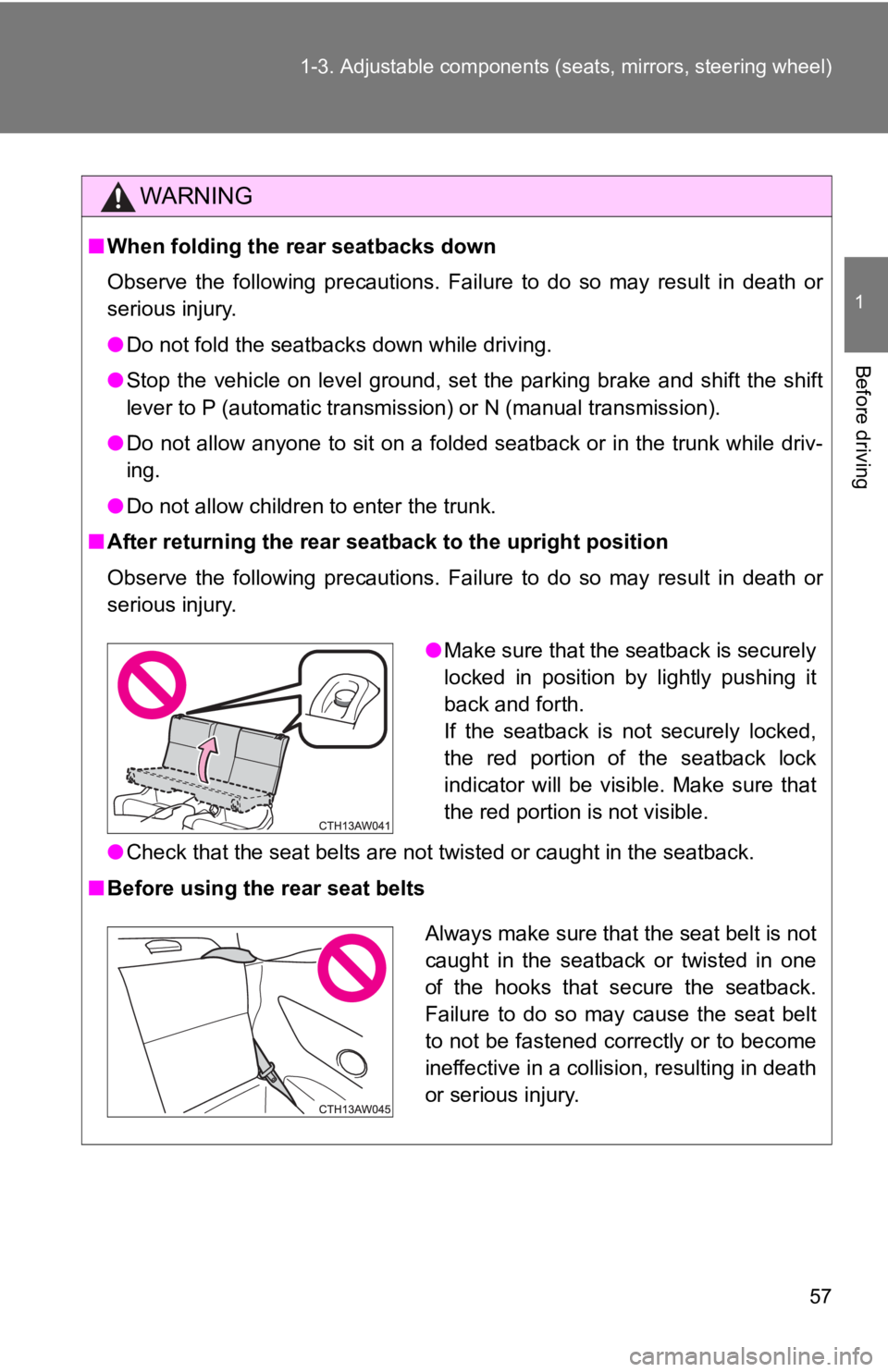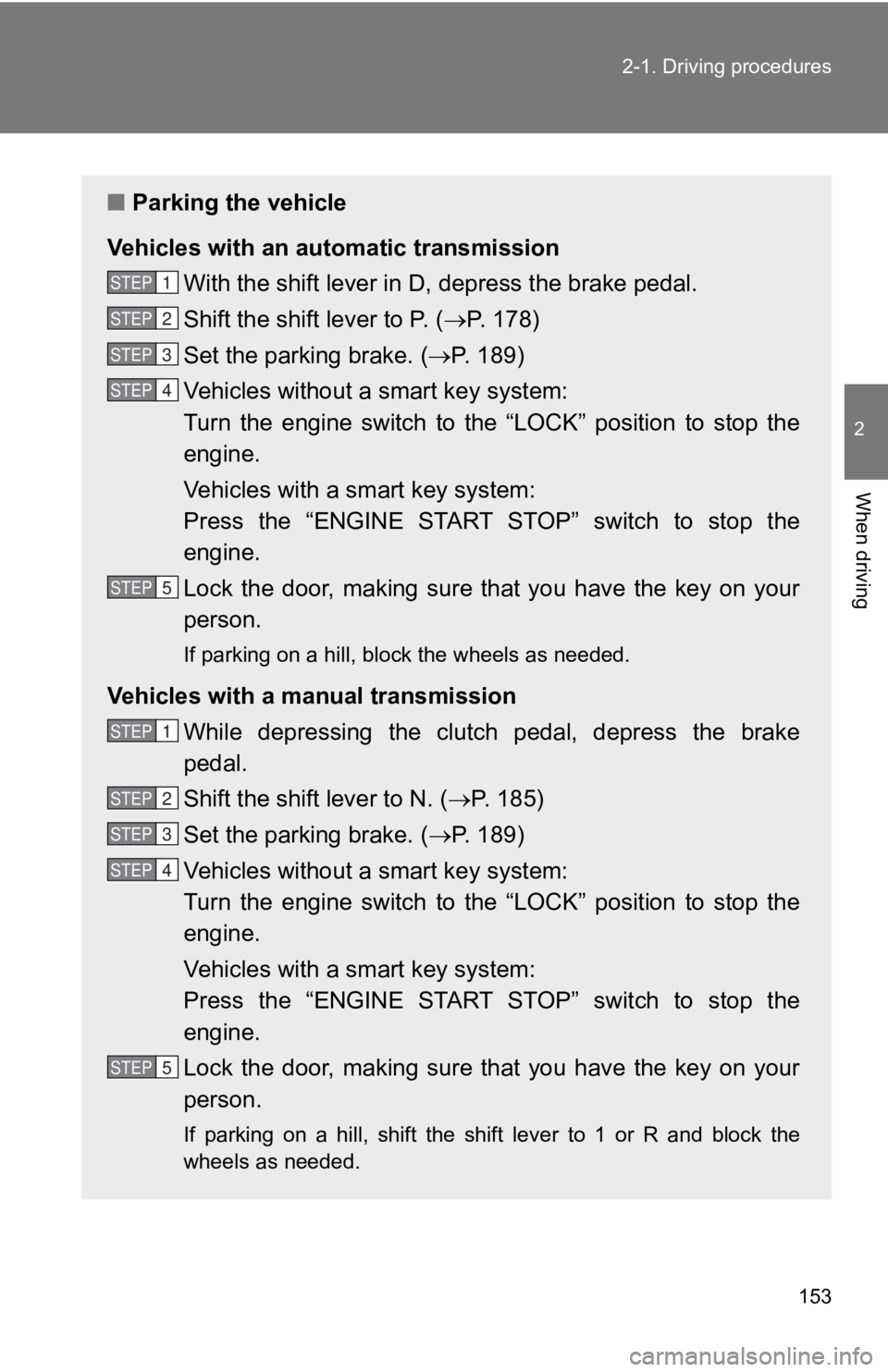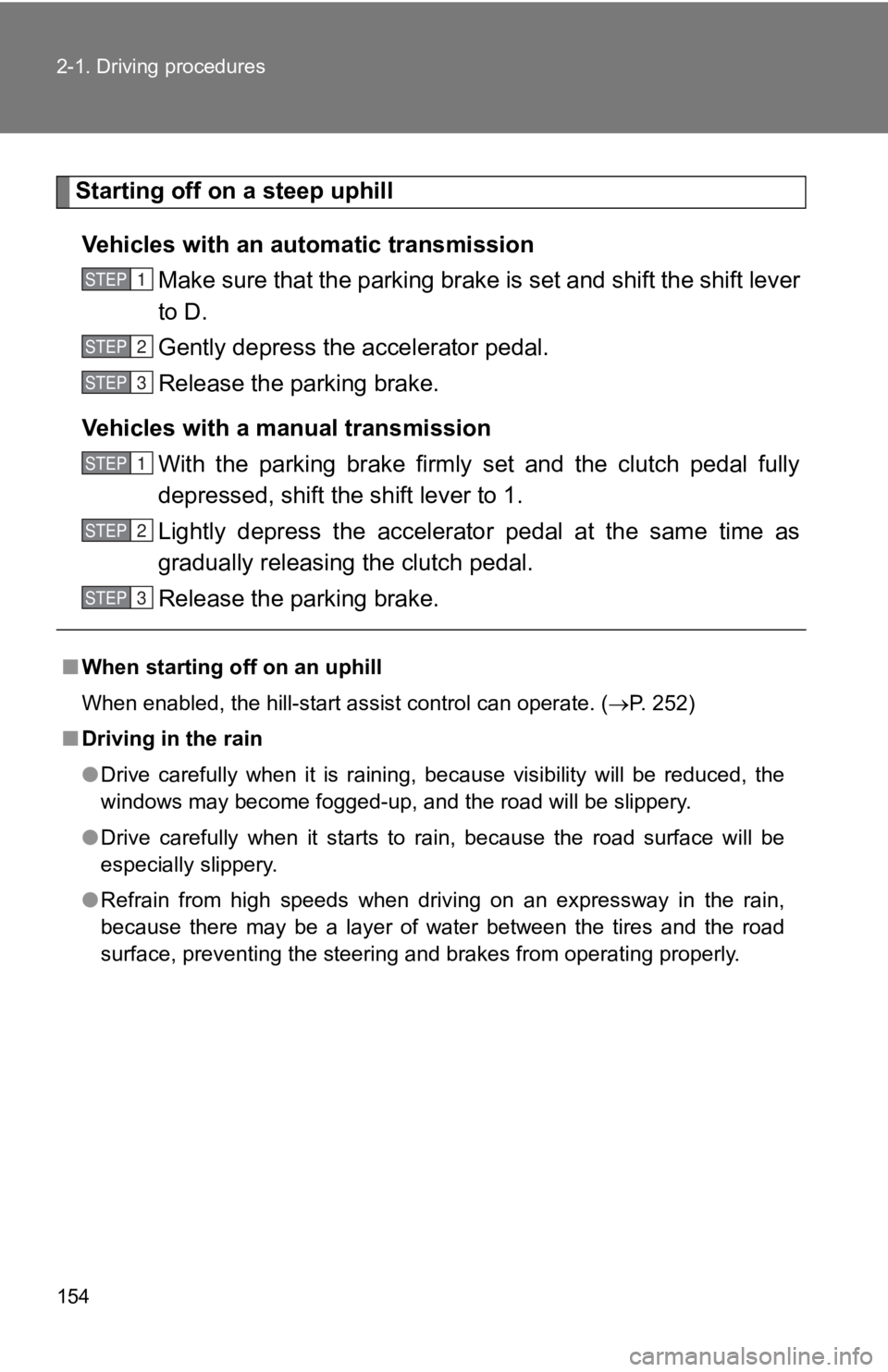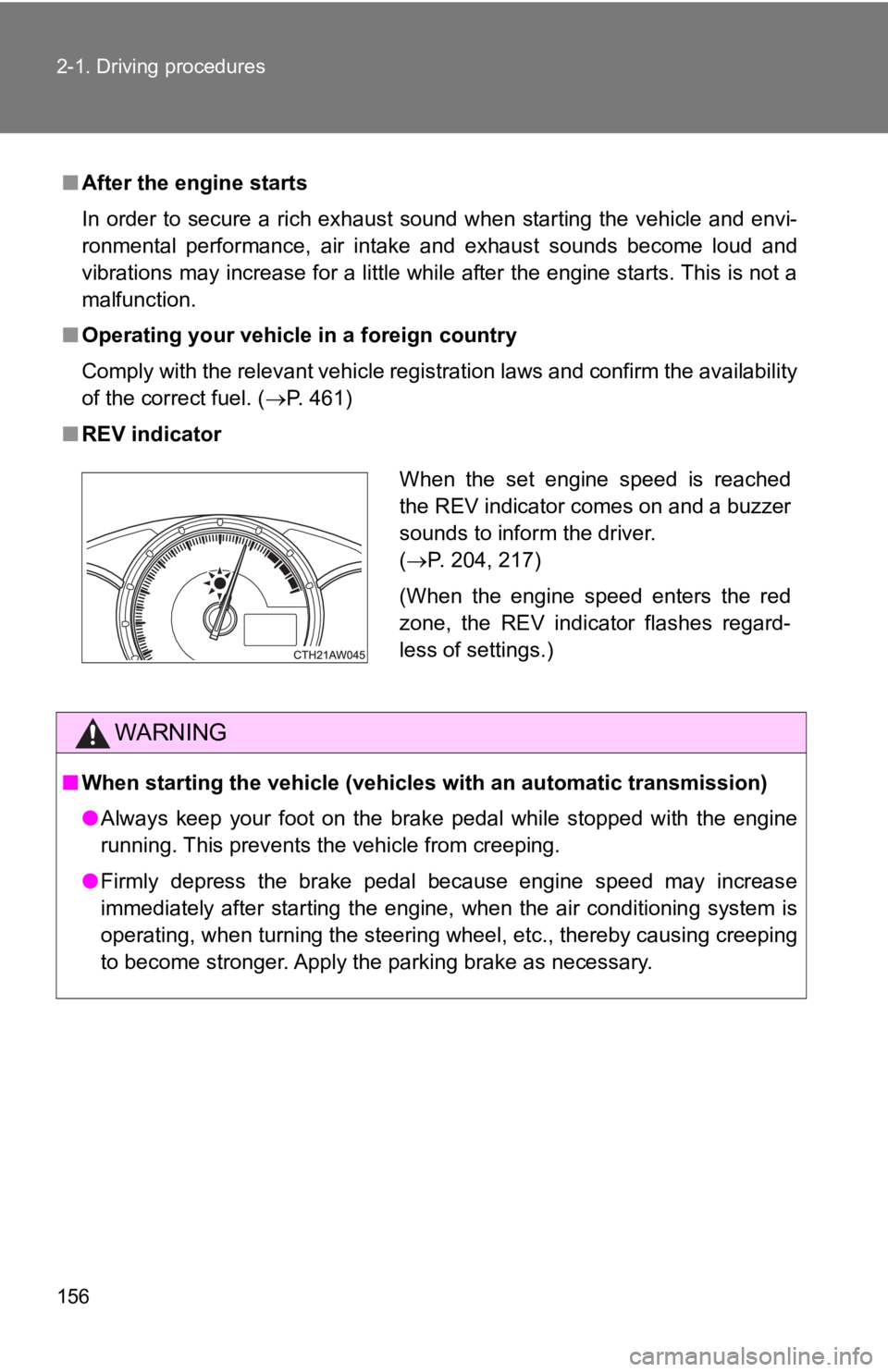2019 TOYOTA 86 transmission
[x] Cancel search: transmissionPage 2 of 532

TABLE OF CONTENTS Index
21-1. Key information
Keys ..................................... 22
1-2. Opening, closing and
locking the doors and
trunk
Smart key system................. 25
Wireless remote control ....... 38
Doors.................................... 43
Trunk .................................... 46
1-3. Adjustable components
(seats, mirrors,
steering wheel)
Front seats ........................... 53
Rear seats ............................ 56
Head restraints ..................... 58
Seat belts ............................. 60
Steering wheel ..................... 67
Anti-glare inside rear
view mirror.......................... 68
Outside rear view mirrors ..... 69
1-4. Opening and closing
the windows
Power windows .................... 72
1-5. Refueling
Opening the fuel tank cap .... 75 1-6. Theft deterrent system
Engine immobilizer
system ................................ 79
Alarm .................................... 82
Theft prevention labels
(U.S.A.)............................... 86
1-7. Safety information
Correct driving posture ......... 87
SRS airbag
(Supplemental Restraint
System airbag) ................... 89
Front passenger occupant
classification system ......... 128
Child restraint systems ....... 137
Installing child restraints ..... 141
2-1. Driving procedures
Driving the vehicle .............. 152
Engine (ignition) switch
(vehicles with a smart
key system) ...................... 166
Engine (ignition) switch
(vehicles without a
smart key system) ............ 175
Automatic transmission ...... 178
Manual Transmission ......... 185
Turn signal lever ................. 188
Parking brake ..................... 189
Horn .................................... 1901
Before driving
2
When driving
Page 17 of 532

17Vehicle data recordings Your Toyota is equipped with several sophisticated computers th at will record
certain data, such as:
• Accelerator status
• Brake status
• Vehicle speed
The recorded data varies according to the vehicle grade level and options
with which it is equipped. These computers do not record conver sations or
sounds, and only record images outside of the vehicle in certai n situations.
● Data Transmission
Your vehicle may transmit the data recorded in these computers to Toyota
without notification to you.
● Data usage
Toyota may use the data recorded in these computers to diagnose malfunc-
tions, conduct research and development, and improve quality.
Toyota will not disclose the recorded data to a third party exc ept:
• With the consent of the vehicle owner or with the consent of t he lessee if
the vehicle is leased
• In response to an official request by the police, a court of l aw or a govern-
ment agency
• For use by Toyota in a lawsuit
• For research purposes where the data is not tied to a specific vehicle or
vehicle owner
● To learn more about the vehicle data collected, used and shared by
Toyota, please visit www.toyota.com/privacyvts/
.
Page 57 of 532

571-3. Adjustable components (s eats, mirrors, steering wheel)
1
Before driving WARNING■ When folding the rear seatbacks down
Observe the following precautions. Failure to do so may result in death or
serious injury.
● Do not fold the seatbacks down while driving.
● Stop the vehicle on level ground, set the parking brake and shi ft the shift
lever to P (automatic transmission) or N (manual transmission).
● Do not allow anyone to sit on a folded seatback or in the trunk while driv-
ing.
● Do not allow children to enter the trunk.
■ After returning the rear seatback to the upright position
Observe the following precautions. Failure to do so may result in death or
serious injury.
● Check that the seat belts are not twisted or caught in the seat back.
■ Before using the rear seat belts ● Make sure that the seatback is securely
locked in position by lightly pushing it
back and forth.
If the seatback is not securely locked,
the red portion of the seatback lock
indicator will be visible. Make sure that
the red portion is not visible.
Always make sure that the seat belt is not
caught in the seatback or twisted in one
of the hooks that secure the seatback.
Failure to do so may cause the seat belt
to not be fastened correctly or to become
ineffective in a collision, resulting in death
or serious injury.
Page 151 of 532

When driving
2
1512-1. Driving procedures
Driving the vehicle............ 152
Engine (ignition) switch
(vehicles with a smart
key system).................... 166
Engine (ignition) switch
(vehicles without a
smart key system).......... 175
Automatic transmission .... 178
Manual Transmission ....... 185
Turn signal lever .............. 188
Parking brake ................... 189
Horn ................................. 190
2-2. Instrument cluster
Gauges and meters ......... 191
Indicators and warning
lights .............................. 194
Multi-information display
(monochrome display) ... 200
Multi-information display
(color display) ................ 207 2-3. Operating the lights and
windshield wipers
Headlight switch ............... 222
Fog light switch ................ 228
Windshield wipers and
washer ........................... 229
2-4. Using other driving
systems
Cruise control ................... 232
Rear view monitor
system ........................... 237
Driving assist systems ..... 245
Hill-start assist control ...... 252
2-5. Driving information
Cargo and luggage .......... 256
Vehicle load limits ............ 260
Winter driving tips ............ 261
Trailer towing ................... 265
Dinghy towing .................. 266
Page 152 of 532

1522-1. Driving procedures
Driving the vehicle The following procedures should be observed to ensure safe driv -
ing:
■ Starting the engine
P. 166, 175
■ Driving
Vehicles with an auto matic transmission
With the brake pedal depressed, shift the shift lever to D.
( P. 1 7 8 )
Release the parking brake. ( P. 189)
Gradually release the brake pedal and gently depress the
accelerator pedal to accelerate the vehicle.
Vehicles with a manual transmission
While depressing the clutch pedal , shift the shift lever to 1.
( P. 1 8 5 )
Release the parking brake. ( P. 189)
Gradually release the clutch pedal. At the same time, gently
depress the accelerator pedal to accelerate the vehicle.
■ Stopping
Vehicles with an auto matic transmission
With the shift lever in D, depress the brake pedal.
If necessary, set the parking brake. If the vehicle is to be stopped for an extended period of time, shift
the shift lever to P or N. ( P. 178)
Vehicles with a manual transmission
While depressing the clutch pedal, depress the brake
pedal.
If necessary, set the parking brake.
If the vehicle is to be stopped for an extended period of time, shift
the shift lever to N. (
P. 185) STEP 1
STEP 2
STEP 3
STEP 1
STEP 2
STEP 3
STEP 1
STEP 2
STEP 1
STEP 2
Page 153 of 532

1532-1. Driving procedures
2
When driving ■ Parking the vehicle
Vehicles with an auto matic transmission
With the shift lever in D, depress the brake pedal.
Shift the shift lever to P. ( P. 1 7 8 )
Set the parking brake. ( P. 1 8 9 )
Vehicles without a smart key system:
Turn the engine switch to the “LOCK” position to stop the
engine.
Vehicles with a smart key system:
Press the “ENGINE START STOP” switch to stop the
engine.
Lock the door, making sure that you have the key on your
person. If parking on a hill, block the wheels as needed.
Vehicles with a manual transmission
While depressing the clutch pedal, depress the brake
pedal.
Shift the shift lever to N. ( P. 185)
Set the parking brake. ( P. 1 8 9 )
Vehicles without a smart key system:
Turn the engine switch to the “LOCK” position to stop the
engine.
Vehicles with a smart key system:
Press the “ENGINE START STOP” switch to stop the
engine.
Lock the door, making sure that you have the key on your
person.
If parking on a hill, shift the shift lever to 1 or R and block the
wheels as needed.STEP 1
STEP 2
STEP 3
STEP 4
STEP 5
STEP 1
STEP 2
STEP 3
STEP 4
STEP 5
Page 154 of 532

1542-1. Driving procedures
Starting off on a steep uphill
Vehicles with an auto matic transmission
Make sure that the parking brake is set and shift the shift lev er
to D.
Gently depress the accelerator pedal.
Release the parking brake.
Vehicles with a manual transmission
With the parking brake firmly set and the clutch pedal fully
depressed, shift the shift lever to 1.
Lightly depress the accelerator pedal at the same time as
gradually releasing the clutch pedal.
Release the parking brake. ■ When starting off on an uphill
When enabled, the hill-start assist control can operate. ( P. 252)
■ Driving in the rain
● Drive carefully when it is raining, because visibility will be reduced, the
windows may become fogged-up, and the road will be slippery.
● Drive carefully when it starts to rain, because the road surfac e will be
especially slippery.
● Refrain from high speeds when driving on an expressway in the r ain,
because there may be a layer of water between the tires and the road
surface, preventing the steering and brakes from operating prop erly.STEP 1
STEP 2
STEP 3
STEP 1
STEP 2
STEP 3
Page 156 of 532

1562-1. Driving procedures
■ After the engine starts
In order to secure a rich exhaust sound when starting the vehicle and envi-
ronmental performance, air intake and exhaust sounds become lou d and
vibrations may increase for a little while after the engine starts. This is not a
malfunction.
■ Operating your vehicle in a foreign country
Comply with the relevant vehicle registration laws and confirm the availability
of the correct fuel. ( P. 461)
■ REV indicator
WARNING■ When starting the vehicle (vehicl es with an automatic transmission)
● Always keep your foot on the brake pedal while stopped with the engine
running. This prevents the vehicle from creeping.
● Firmly depress the brake pedal because engine speed may increas e
immediately after starting the engine, when the air conditionin g system is
operating, when turning the steering wheel, etc., thereby causi ng creeping
to become stronger. Apply the parking brake as necessary. When the set engine speed is reached
the REV indicator comes on and a buzzer
sounds to inform the driver.
( P. 204, 217)
(When the engine speed enters the red
zone, the REV indicator flashes regard-
less of settings.)